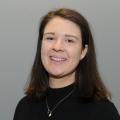
AT LEAST 11,700 pupils were absent from Hampshire schools on just one day in October, a government survey has revealed.
With falling attendance rates across England, but lowest in parts of the north, the Association of School and College Leaders (ASCL) is calling for the government to provide more support and guidance to schools.
Geoff Barton, general secretary of the ASCL, said: “The Government has to set out clear plans on how next year’s GCSEs and A-levels will be fair to students given that they are being disrupted to a widely differing extent.
"The plans that have been set out so far amount to no more than tinkering at the edges and don’t go anywhere near far enough. Schools and students need a robust plan and they need it now.”
The Department for Education's survey of school attendance showed 11,755 pupils were absent from Hampshire schools on October 15 – with an overall attendance rate of 92 per cent.
Of these, 64 per cent were absent from secondary schools, 33 per cent from primary schools and around 3 per cent from special schools.
The survey only looked at state-funded schools, of which 84 per cent responded, so it is likely even more pupils were off throughout the area.
The figures, which were placed in the House of Commons library following a written question from MP Margaret Greenwood, showed the total attendance rate across England was 89 per cent – down from 90 per cent a week earlier.
The DfE said up to 412,000 children did not attend school for Covid-19 related reasons, with the majority self-isolating due to potential contact with a case of coronavirus.
More than a fifth of schools said they had one or more pupils self-isolating who had been asked to do so due to potential contact with a case of coronavirus inside the school.
Attendance rates varied greatly across the country, with secondary school attendance in Knowsley, in the North West, the lowest (61 per cent), as infection rates rose and Tier-3 restrictions were imposed.
In Hampshire, 88 per cent of secondary pupils were in class on October 15.
This was slightly lower than the average across the South East, of 89 per cent, which was the joint-second highest in England.
Parts of London recorded secondary school attendances as high as 94 per cent, close to the usual national average.
With such uneven rates across the country, the Association of School and College Leaders said the figures show schools are doing a fantastic job under difficult circumstances, but they need more support.
While the government has said exams will go ahead in 2021, but held three weeks later than usual, the National Education Union said the mistakes of 2020 risk being repeated.
Avis Gilmore, deputy general secretary of the NEU, said: "We need to see a reduction in what is assessed, and a serious conversation with the profession to ensure a robust national system of moderated centre-assessed grades.
“Decisive action is needed to ensure schools and colleges have a clear path forward, giving students and their families the reassurance that an examination system is in place that ensures fairness across the country.”
A DfE spokeswoman said schools were expected to provide pupils with remote education when they were self-isolating and headteachers could decide how to use their school’s premium allocation funding to tackle the impact of lost teaching time on pupils.
She added: “Exams are the fairest way of judging a student’s performance, which is why they will go ahead next year, underpinned by contingency measures developed in partnership with the sector.
“Over the coming weeks we will jointly identify any risks to exams and the measures needed to address potential disruption, with fairness for students continuing to be our priority.”



Comments: Our rules
We want our comments to be a lively and valuable part of our community - a place where readers can debate and engage with the most important local issues. The ability to comment on our stories is a privilege, not a right, however, and that privilege may be withdrawn if it is abused or misused.
Please report any comments that break our rules.
Read the rules here